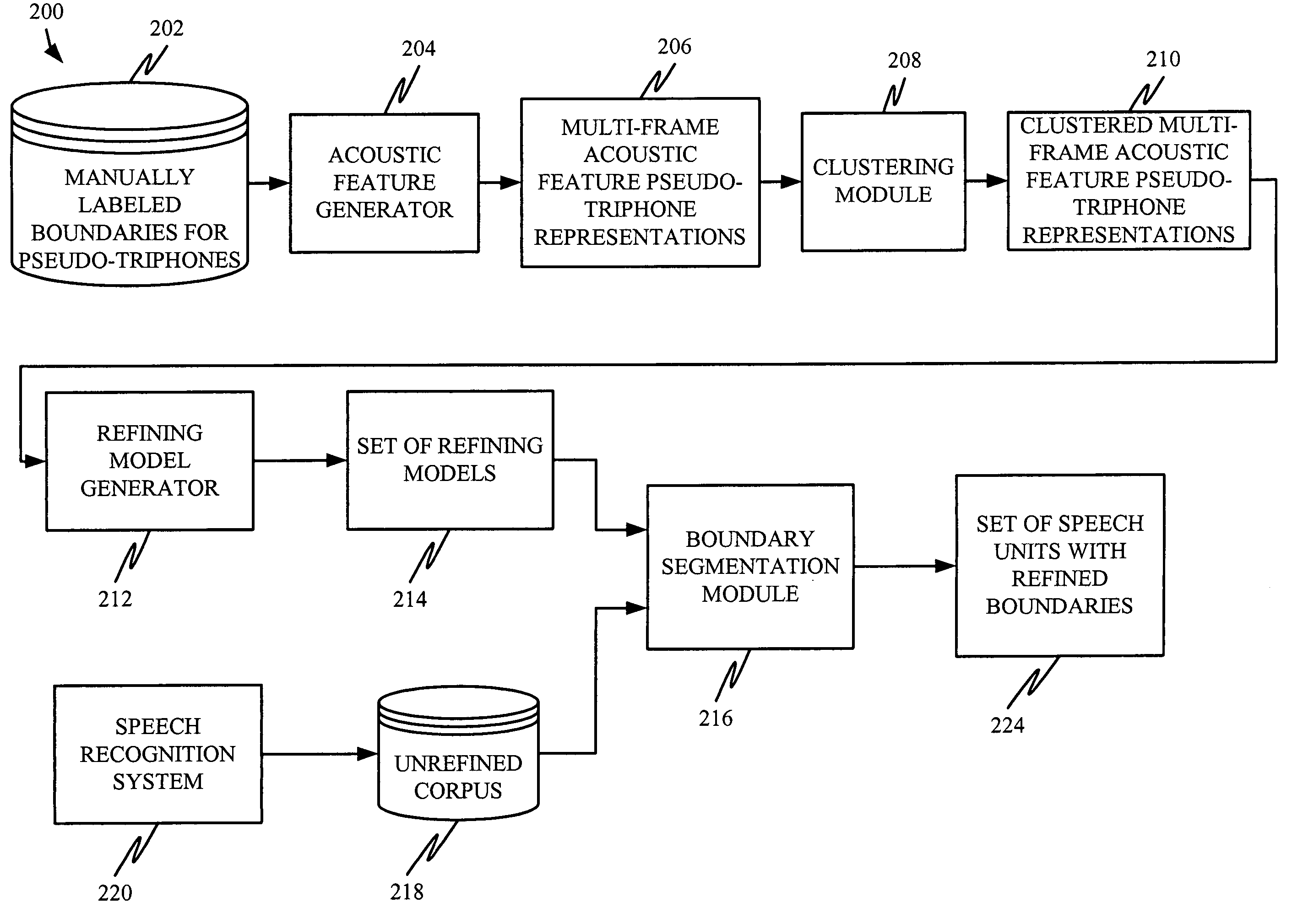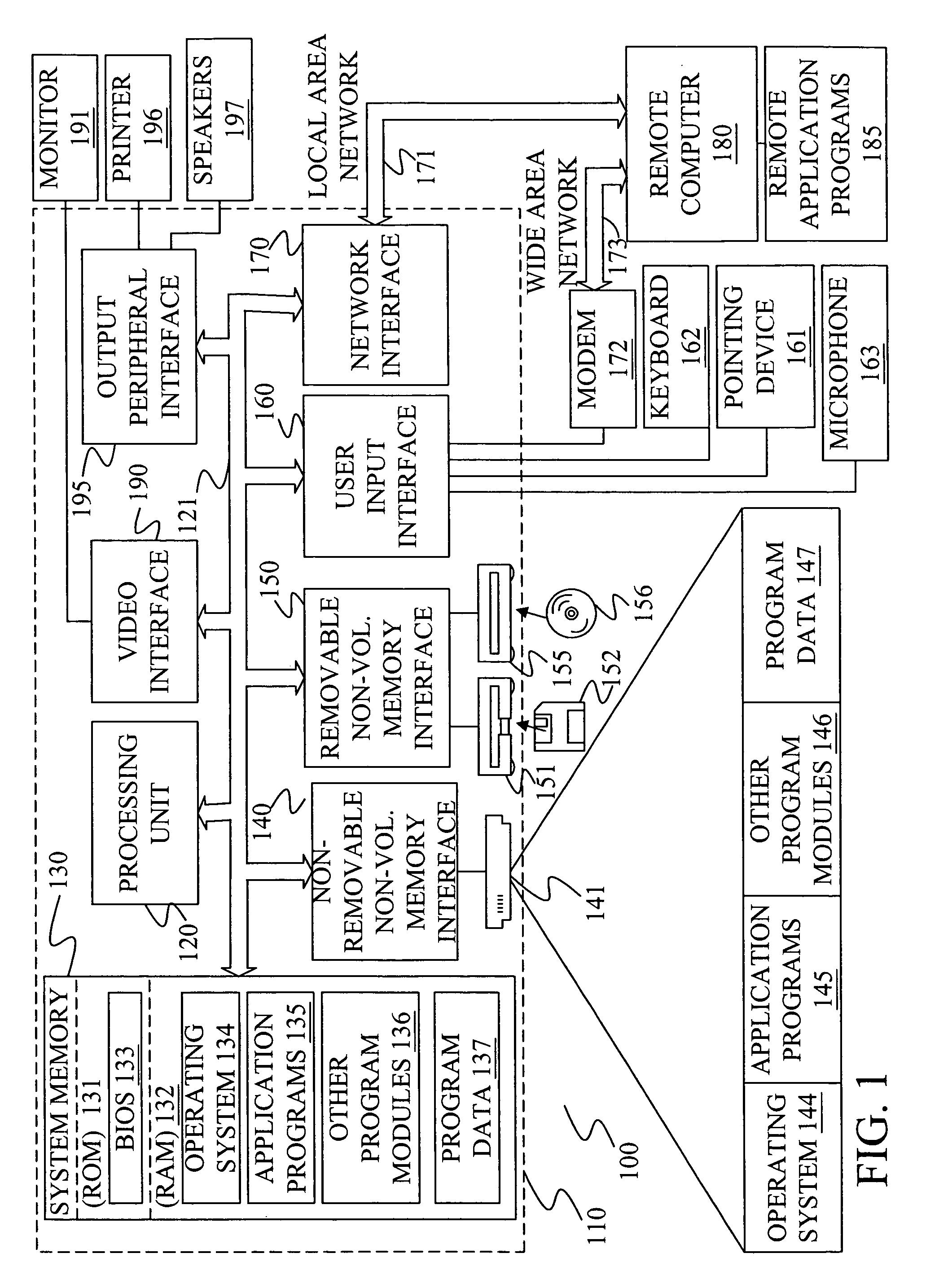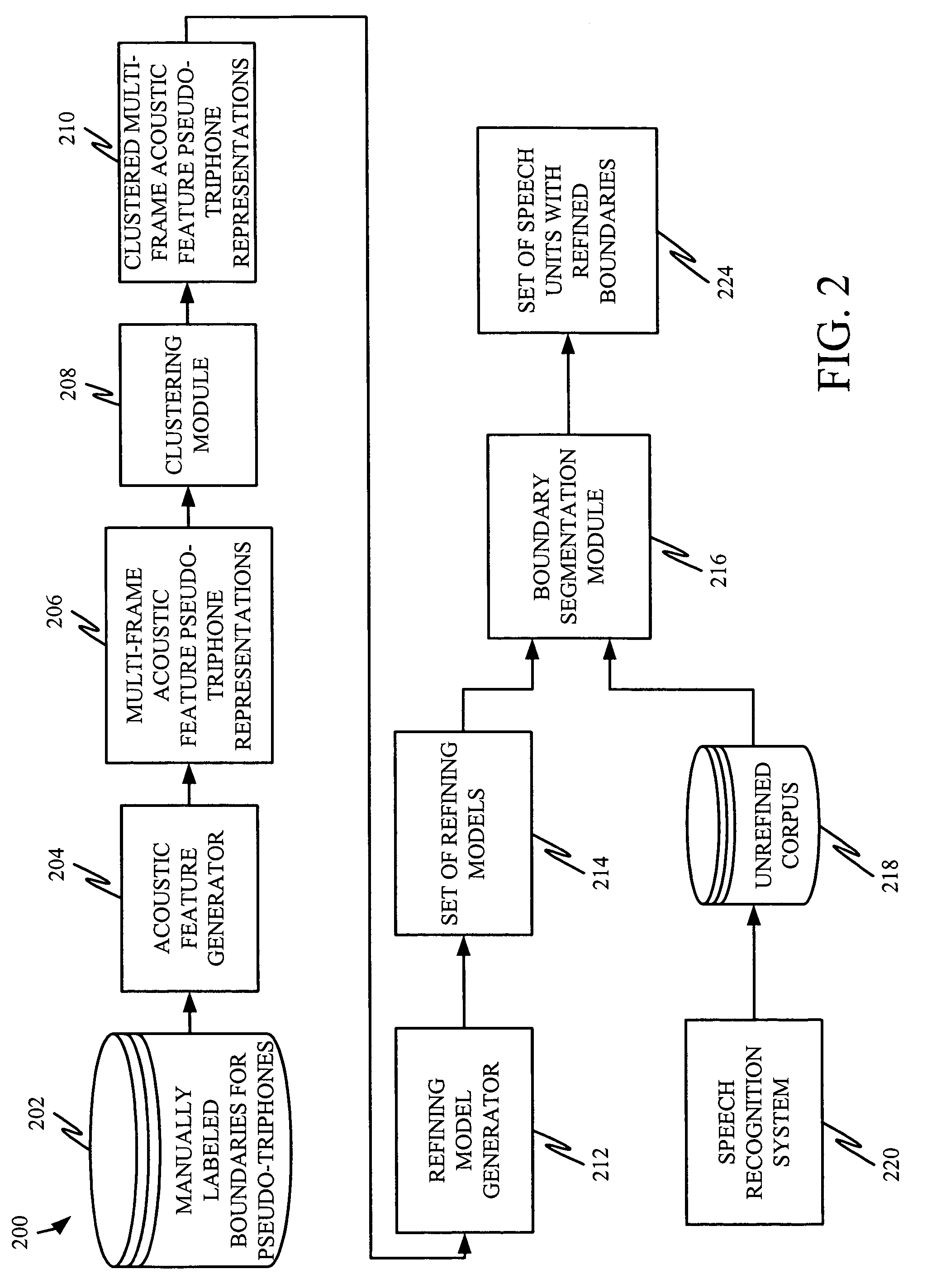Refining of segmental boundaries in speech waveforms using contextual-dependent models
a technology of contextual-dependent models and segmental boundaries, applied in the field of language processing systems, can solve the problems of inability to apply a large speech corpus, boundary marks are to some extent under-estimated, and the boundaries obtained in this manner are often not identical to the best splicing points between speech units
- Summary
- Abstract
- Description
- Claims
- Application Information
AI Technical Summary
Problems solved by technology
Method used
Image
Examples
Embodiment Construction
[0015]The present invention relates to a system and method for refining segmental boundaries of speech units used in concatenative TTS systems. However, prior to discussing the present invention in greater detail, one illustrative environment in which the present invention can be used will be discussed.
[0016]FIG. 1 illustrates an example of a suitable computing system environment 100 on which the invention may be implemented. The computing system environment 100 is only one example of a suitable computing environment and is not intended to suggest any limitation as to the scope of use or functionality of the invention. Neither should the computing environment 100 be interpreted as having any dependency or requirement relating to any one or combination of components illustrated in the exemplary operating environment 100.
[0017]The invention is operational with numerous other general purpose or special purpose computing system environments or configurations. Examples of well known comp...
PUM
 Login to View More
Login to View More Abstract
Description
Claims
Application Information
 Login to View More
Login to View More - R&D
- Intellectual Property
- Life Sciences
- Materials
- Tech Scout
- Unparalleled Data Quality
- Higher Quality Content
- 60% Fewer Hallucinations
Browse by: Latest US Patents, China's latest patents, Technical Efficacy Thesaurus, Application Domain, Technology Topic, Popular Technical Reports.
© 2025 PatSnap. All rights reserved.Legal|Privacy policy|Modern Slavery Act Transparency Statement|Sitemap|About US| Contact US: help@patsnap.com



